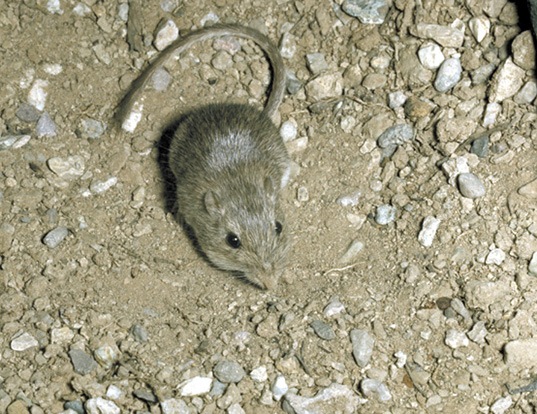


Section snippets Sonoran Desert and the Organ Pipe Cactus National Monument (ORPI) We aim to characterize the response of rodent abundance to surface temperature, and to use the response to determine the spatial distribution of nocturnal desert rodent abundance in the monument. We hypothesize that maximum seasonal (summer) surface temperature explains rodent abundance in the Organ Pipe Cactus National Monument of southwestern Arizona. The true response of a species to one variable, however, is usually detectable only when all others occur at non-limiting levels (Liebig's law of minimum Huston, 2002, Austin, 2007)- the thermal properties and relatively uniformity of arid land surfaces presents an opportunity to explore surface temperature as a measurable factor for rodent habitat modeling (Fisher et al., 2007). Extreme temperatures in the summer stress thermal adaptations of warm-adapted desert mammals and vegetation that they depend upon for food, moisture and cover (Alagaili et al., 2017). The thermal niche for rodents is defined by lethal limits, physiological or metabolic optima, behavioral performance optima, or by behavioral preferences (Magnuson et al., 1979). Surface temperature, a source of conductive, convective and radiant energy transfer, is a direct measure of the thermal environment at the surface. The effects of solar heating occur also at night when heat stored in desert soils substantially elevates air temperatures. Burrows and nests provide lower, stable temperatures, but depths are typically 40–60 cm below the surface at the deepest portion where soil temperatures remain high (Walsberg, 2000). Most rodents are nocturnal, staying underground during the heat of the day. Water balance dictates their primary food choices (Vorhies and Taylor, 1940, Hoffmeister, 1986), and they are found therefore in association with cactus in desert regions (Olsen, 1973). Other species, such as the woodrat (murids), lack the physiology to conserve water (Dial, 1988), thus they are more susceptible to dehydration. The kangaroo rat has an exceptional capacity to withstand elevated body temperatures as a means to tolerate high air temperatures (Dawson, 1955). Subspecies of heteromyids from xeric locations show significantly lower evaporative water loss than those from mesic locations (Tracy and Walsberg, 2000).
#ARIZONA POCKET MOUSE FREE#
Rodents have evolved physiological, morphological and behavioral adaptations to survive extreme desert conditions characterized by little or no free water, minimal shade, low humidity and high daytime temperatures. These results prove that simple models can inform complex ecological processes.ĭesert rodents are active only a few centimeters above the ground, where the air is usually much warmer than ambient temperatures due to solar heating of the soil surface (Cloudsley-Thompson, 1991). topography, vegetation cover and soil properties) that define the dominant habitats of ORPI rodents. Surface temperature integrates multiple landscape characteristics (e.g.

Abundances for the high and low temperature habitat groupings correlate linearly with surface temperature (r = +0.66 and −0.75, respectively, p < 0.001). Results show peak seasonal surface temperature splits high species abundances into two groups: Merriam's kangaroo rat, Arizona pocket mouse, desert pocket mouse and southern grasshopper mouse species prefer habitat characterized by higher surface temperatures and white-throated wood rat, cactus mouse, rock pocket mouse and Bailey's pocket mouse species prefer habitat characterized by lower temperatures. Daytime surface temperature derived from images collected in June across thirty rodent trapping grids ranged from 318 K (45.0 ☌) to 332 K (59.2 ☌). We produce response curves that describe the effects of surface temperature on species abundance. We use surface temperature extracted from the Landsat Thematic Mapper thermal infrared band to model rodent abundance obtained from trapping data at the Organ Pipe Cactus National Monument in southwest Arizona. Nocturnal rodents play a key role in the Sonoran Desert ecosystem as consumers, prey and reservoirs of disease-yet rodent distribution remains poorly mapped.


 0 kommentar(er)
0 kommentar(er)
